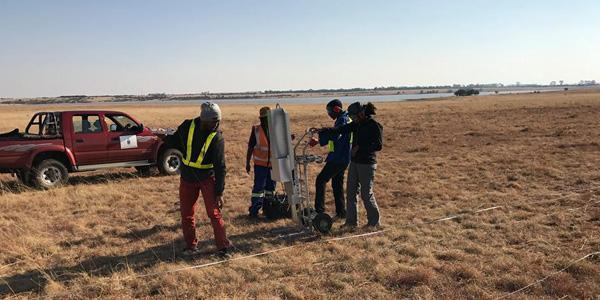AfricaArray advancing Geophysics in Africa
- Wits University
AfricaArray Field School upskills geophysical talent throughout Africa in response to the growing demand for highly trained geoscientists and researchers.
The School of Geosciences held the AfricaArray International Geophysics Field School (July 2-22) after successfully hosting the 12th annual AfricaArray workshop (June 29-30) at Wits.
Launched in July 2004, AfricaArray is a public-private partnership supporting training and research in earth, atmospheric and space sciences in Africa. Its core mandate is to create new geoscientific research and training programmes and rebuild existing ones in Africa, with Africans and for Africans. AfricaArray is a partnership between Wits, the Council for Geoscience (formerly the South African Geological Survey), and Pennsylvania State University.
The annual field school is a three-week programme designed to introduce the complete workflow of a geophysical project whilst developing a wide-ranging network of geophysical talent throughout Africa. More than 30 participants from Botswana, Ghana, Lesotho, Madagascar, Malawi, South Africa, Uganda, and the US were selected this year to participate in the field school. The group included honours students from the School of Geophysics (SoG) at Wits, and academics and students from across Africa and the US.

During the first week of the field school at Wits, participants were exposed to safety and planning geophysical surveys by, learning software, forward modelling, testing equipment, packing, planning and collecting background geological information., In the second week, the participants went out to the field to collect data at the Vredefort impact structure, the world’s largest and oldest impact structure, one hour south of Johannesburg.
“The week-long data-collection phase ensures that participants are familiar with the operation of all equipment, including gravity, magnetics, differential GPS (global positioning system), resistivity, electromagnetic methods (including EM31 and EM34) and reflection and refraction seismology,” says Susan Webb, coordinator of the field school and Associate Professor in the SoG.
“We break into separate groups and the participants apply all of the methods to address a scientific objective.”
In the final week of the school back on campus, the participants interpreted and integrated their data to address their particular scientific objective. This was followed by presentations on their findings and interpretations.
Tamara Makhateng, a Master of Science in Geophysics student who returned as one of the instructors in year’s field school says that their role as instructors is important in facilitating the workflow of data planning, collection, and interpretation.
“It is a technical aspect. You have to make sure that equipment works, and that you know how to process the data once you have collected it. You basically go through the full run down as an instructor as if you were the actual student; doing the measurements, processing the data and doing some sort of interpretation. That is the main thing, to know what you are doing when you get to the field,” says Makhateng.
Makhateng, who was a student participant last year, says going to the field illuminated the subject of Geophysics for her.
“I have learnt that you learn quite a lot when you come from the field. Geophysics made sense for me when I came back from the field. Everything that they talk about, you could actually see. You can see the results.”
There is a growing demand for highly trained geoscientists and researchers, and capacity in geoscience fields is extremely limited in much of Africa.
The AfricaArray Field School is a response to this demand, by upskilling academics, students, government and industry employees who have been trained as geophysicists but lack significant field experience.
The value of the field school goes beyond geophysical training. It harnesses participants’ interpersonal skills who engage with diverse groups of people from various parts of the world and gives them a true sense of team work.
Although the field school presented challenges to some participants, these challenges were appreciated.
The field school is designed to challenge students and develop their problem solving skills in addition to their interpersonal skills.
“It is good to experience difficulties and to see if people are able to cope with team work. Even if it might be difficult, at the end of the day, we were able to achieve our objectives. It was a really nice opportunity,” said one of the participants.
The AfricaArray Field School is sponsored by the Society of Exploration Geophysicists , UNESCO, Council for Geoscience, Council for Scientific and Industrial Research, Geosoft, Spectrem, Red Dog Scientific Services and AfricaArray. The US participants are sponsored by the National Science Foundation.
For more information, feedback and photographs from the Field School, join their Facebook page; “AfricaArray/Wits Geophysics Field School”, where previous participants also post about their geophysical work.

